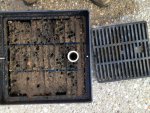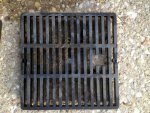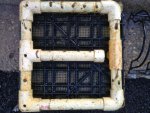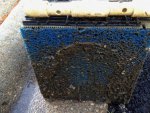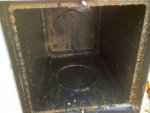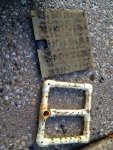Greetings to all from the England,
I have been an avid reader of Dr Novaks posts on KKU for a while and i'm also most alarmed that the whole thread has gone missing, just to put you in the picture as i see it.
1, the forum is under constant attack by spammers, the whole site is spammed on a daily basis.
2. Dave the koi (super moderator and site caretaker) seems to be a little overwhelmed with this work load. (please refrain from the name calling)
3. Dave collins seems to be the only other moderator helping Davethekoi.
4. the forum is owned by a guy called Carl and it seems he's hard to get a hold of, once this happens i hope the whole thread can be resurrected.
Dear Dr Novak, it's a shame to type to you for the first time under these strained times, however i'm in with this Anoxic filtering, i have been a fishkeeper for some time, let me tell you, nothing has fired up my entusiasm to go do something as much as the knowledge you graciously share with the world and i thank you for that.
My plans are for a start up next year, i already have a few components and shall keep adding to this as and when, for now though most of my time is been applied to pre filtration tecniques and the best direction to go.
Question........ i'm working on installing 16 12" biocenosis baskets inside an IBC with an upward flow, one thing i'm a little unsure about is during the spring and autumn cleaning of the Anoxic filter, is it important to keep the baskets submerged, my worry is, the ingress of new water when it's re-filled, would this draining and re-filling have a detremental affect on the faculative bacteria?
They say "every cloud has a silver linning" and in this case my silver linning is finding this forum, i would class myself as a fishkeeper not just a carp fan, i look forward to reading more of this most interesting site later.
Best fishes to all.
Daz
Don’t worry, I‘ve had a few complaints about what happened on KKU… as everyone wants it to go back to the way it was. I have all the info that I wrote on KKU in my archives and everything I say here is also documented, too. However, I won’t spend all that time resubmitting the articles until I’m guaranteed that such a mishap wouldn’t happen again or that all info is backed up on another server. It will take me hours to get KKU up to speed again on the Anoxic Filtration System, can anyone tell me why I’m doing this for free again?
I had a tech tell me that they receive 6,000,000 emails a month but only 200,000 of those are legit and the rest is all spam, and everything else that comes in to ruin a system. I guess you really don’t think about how much work a forum is to run; we just take it as a piece of cake to run.
I see that some think I’m a little long winded … me long winded, NO WAY! They better get used to that because not everyone comprehends information at the same speed. I once had a student ask me if I could repeat what I just said a little faster so that way no one in class could comprehend it! I’m not just talking to highly skilled hobbyist but also newbie’s on this or any other forum that deserve some respect. At one time in our lives we all started out as newbie’s.


